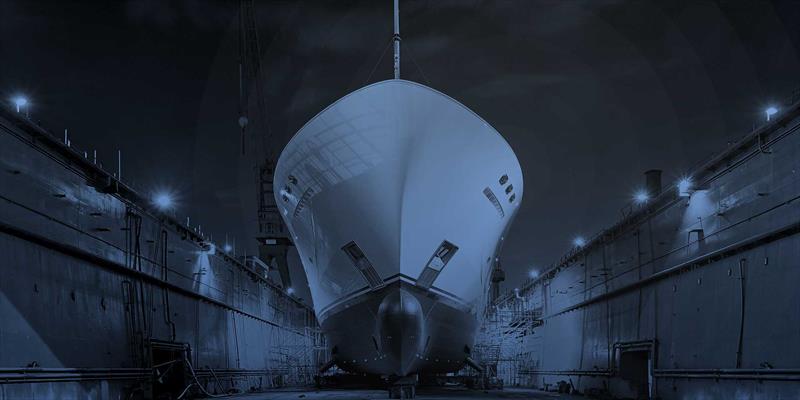
SY Bayesian incident - MAIB's interim report release and the response of the SYBAss
by Superyacht Builders Association 19 May 13:20 BST

Superyacht Builders Association © Superyacht Builders Association
With the UK's Marine Accident Investigation Branch (MAIB) releasing its interim report this week into the sinking of the 55.9-metre sailing yacht Bayesian on 19 August 2024 with the tragic loss of seven lives, the Superyacht Builders Association (SYBAss) has begun to study MAIB's preliminary findings and has also begun the process of consulting with naval architects and other experts to understand the provisional findings of the report.
SYBAss, whose members comprise 25 of the world's leading superyacht builders including several of the leading super-sailing yacht shipyards, represents the interests of the superyacht industry both with Flag State and Classification Societies and also at the International Maritime Organisation (IMO).
"This initial report - while far from conclusive and with investigations still ongoing - offers an important first step to clarifying what may have caused the tragic loss of the sailing yacht Bayesian off the north coast of Sicily last summer," begins Theo Hooning, Secretary General of SYBAss. "While we recognise that there is still a long way to go to understand what happened that night, and what, if anything, may have prevented the vessel's loss - and the heartbreaking loss of life that resulted from the incident - SYBAss is studying the provisional findings and will incorporate them into the consultative process we are continually undertaking to improve superyacht projects. The addition of the interim report to our ongoing work will help us to understand better any implications for improving the safety of superyachts - both motor and sail - in anticipation of the conclusions of the full investigation, expected to be completed later this year."
While it is important to note that salvage efforts and subsequent investigations were still ongoing at the time of the report's release, the interim report does offer some preliminary insights, based on crew testimony and 'desktop' assessment, both into the timeline of events of the night of the incident along with a detailed outline of crew actions, and also into the potential causes of the incident.
The report suggests that sudden and extreme weather conditions via a violent downdraft due to a mesocyclonic storm with significant supercell development caused the yacht to capsize in an unrecoverable knockdown incident, which then led to downflooding of the vessel.
The yacht was built under the UK's Maritime and Coastguard Agency (MCA) code of practice for safety of commercial vessels, and was also designed and constructed to meet the Red Ensign Group's Large Yacht code. This included meeting full stability test criteria, and a stability information booklet was carried on board as part of the yacht's documentation.
However, the report identifies that the stability requirements set out under the LY2 iteration of large yacht code, which was in force when the yacht was launched in 2008, did not consider extreme environmental impacts on static stability - in effect, the maximum heel angle to prevent downflooding when in a motoring condition or stationary with the centreboard keel in raised position, rather than in a sailing condition with the centreboard keel lowered. As a result, the report suggests - following tests at the Wolfson Unit in Southampton, UK - that a gust in excess of 63.4 knots on the beam would have been enough to cause the yacht to heel past 70.6 degrees due to the windage of the mast, rigging and other structural elements, which it determined was the angle of vanishing stability in the motoring condition of the yacht.
A key finding of the interim report was that, with LY2 not considering such extreme environmental impacts on the vessel in its static or motoring condition, the crew and the owner had no way of knowing the potential vulnerabilities. SYBAss's initial consultations with leading naval architects since the release of the interim report suggest that there may well be more factors in play, but it is clear that the incident could have implications for the re-evaluation of stability calculations for vessels mandated under the Large Yacht codes, including for motor yachts where a combination of high superstructure windage and relatively shallow keel draft could present similar vulnerabilities in extreme weather events.
"SYBAss's mission is to represent its members and the wider superyacht industry particularly when it comes to the safe design, construction and operation of superyachts, and as builders our members place conformity with the highest level of regulations as central to their operations. As a result we are not only taking a proactive approach to the findings and investigations into the Bayesian incident but we also confirm our readiness and availability to collaborate with Class and Flag on improving the safety and reliability of yachts, should the need arise as a result of MAIB's investigations," Hooning confirms.
"Our Technical Committee and the research and development offices of our members are already applying their considerable combined resources and knowledge to consideration of the provisional findings while we wait for a more complete report from MAIB. Our focus," Hooning concludes, "is to ensure that the findings from the incident are as thoroughly researched as possible, and that any actionable conclusions are applied in such a way that we can help Flag and Class eliminate the chances of such a tragedy occurring in the future."